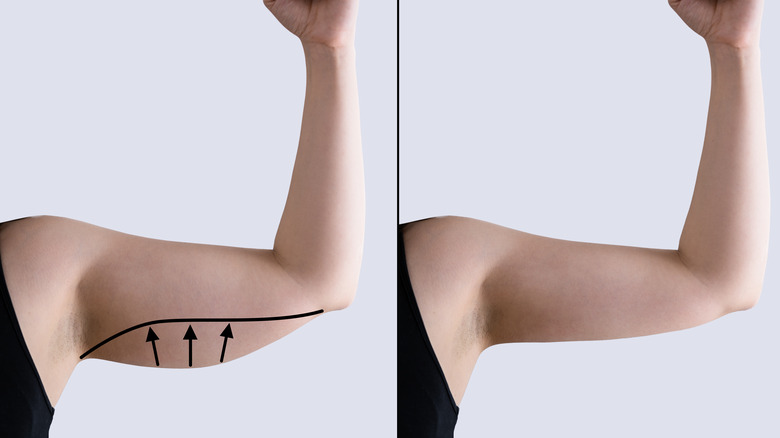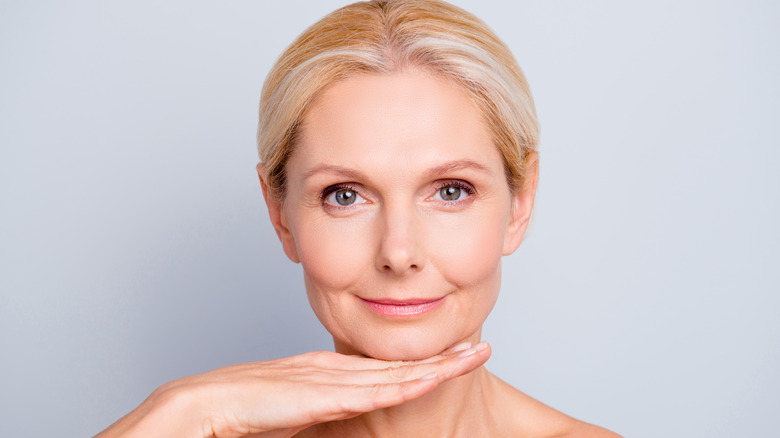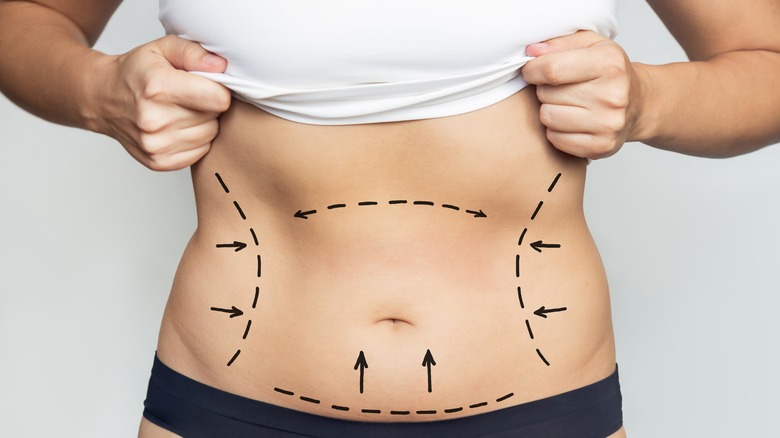Liposuction Versus CoolSculpting: Which Has Fewer Risks?
Most of us want to see the best version of ourselves staring back at the mirror every morning. However, our busy schedules can sometimes get in the way of cooking healthy meals or going to the gym. As a result, we end up with unwanted fat in unwanted places. Getting rid of excess fat can be challenging through diet and exercise, especially if you're always busy. Many people have taken advantage of procedures that help remove those annoying fat cells that get in the way of looking their best.
One of the most popular fat-removing options available to the public is liposuction. According to the American Board of Cosmetic Surgery (ABCS), liposuction is a surgical fat removal procedure that became popular in the 1980s. Liposuction is successful at removing fat from several parts of the body. CoolSculpting is a popular non-surgical fat reduction treatment to contour the body (via ABCS). With any procedure, there are risks involved. Which of these body contouring options is the safest route to get the look you want?
Most CoolSculpting side effects are minimal
If you're afraid of needles, CoolSculpting is done without the use of surgical tools or anesthesia. During the CoolSculpting procedure, a gel pad is applied to the skin and a cooling panel is placed on the treatment area. Then, an applicator is attached to the area to perform cryolipolysis, a fat freezing process that kills fat cells. The procedure has been FDA approved to remove fat from these nine areas of the body: under the chin, under the jaw, the bra line, abdomen, thigh, flank, under the buttocks, the underarm, and back (via CoolSculpting.com).
The CoolSculpting procedure is not free of discomfort or risks. During the procedure, you can experience, intense cold, cramping, stinging, pulling, pinching, and tingling in the area being treated. Some of the side effects following treatment include swelling, blanching or redness of the skin, bruising, cramping, and a sensation of fullness in the back of the throat after treatment in that area (via CoolSculpting.com).
A review article in the Dermatologic Surgery journal found that the most common adverse side effects of CoolSculpting were swelling, bruising, redness, and numbness. More serious side effects included skin hyperpigmentation, motor neuropathy, growth of fat cells, severe pain, and abnormal sensations. However, most side effects are minimal and resolve quickly.
Liposuction procedures have greater health risks
According to the ABCS, liposuction should be performed under anesthesia by a board-certified cosmetic surgeon. During the procedure, a cannula, a small hollow tube, is moved through fat deposits as suction removes excess fat cells. Common areas of fat removal are the thighs, back, arms, face, neck, and abdomen. Although liposuction gives a more dramatic sculpted result than other fat removal procedures, there are greater health risks involved (via ABCS).
Liposuction is riskier than CoolSculpting for the simple fact that it involves surgery, according to Healthline. Some of the most common side effects are skin infection, accumulation of fluid, irregular skin shape, and internal puncture wounds. More serious risks include adverse side effects to anesthesia, fat embolism, and heart or kidney problems. Before undergoing a fat removal procedure, you should consider the risks and talk to a certified provider to determine if you are a good candidate.



